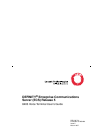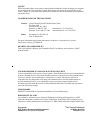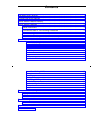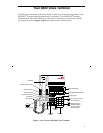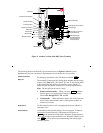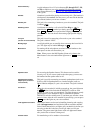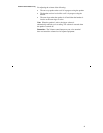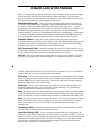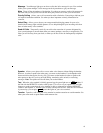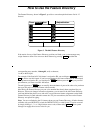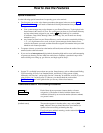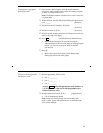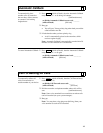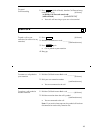
5
A Quick Look at the Features
Below is a listing of many commonly used features and a description of how to use them. Note:
You will have the Conference, Drop, Hold, Message, Mute, Select Ring, Test, and Transfer
features. In addition, you may be able to use the speaker on your voice terminal and many of the
other features listed here; your system manager can advise you.
Abbreviated Dialing (AD) Allows you to store selected telephone numbers for quick and
easy dialing. Each number can be a complete or partial telephone number, an extension number,
or a feature or trunk code. Abbreviated Dialing offers four possible types of lists — personal,
group, system, and enhanced, and you can have a total of three out of the four lists. Numbers on a
personal list are programmable by you; numbers on group lists are programmable by the
controller of the list; system lists are programmable only by the system manager. Use this feature
as a timesaver for dialing frequently called, lengthy, or emergency numbers. Note: Check with
your system manager concerning what types of lists you have and how many of each list.
Automatic Callback Sends you a special 3-burst ring indicating a previously busy or
unanswered extension you dialed is now available. Use to avoid constant redialing when you wish
to speak to someone who is frequently busy on the telephone or in and out of the office. Note:
You can use this feature only for extensions, not for outside numbers.
Call Forwarding All Calls Temporarily forwards all your calls to another extension or to an
outside number, depending on your system. Use when you will be away from your voice terminal
and you want your calls to be forwarded to a telephone number of your choice.
Call Park Puts a call on hold at your voice terminal, for retrieval at any extension. Use when
you need to go elsewhere to get information during a call, or whenever you wish to complete a
call from a different location. Also, if the call received is for someone else, use it to hold the call
until the called party can answer it from another voice terminal.
Call Pickup Lets you answer a call at your voice terminal for another extension in your pickup
group. Use when you wish to handle a call for a group member who is absent or otherwise unable
to answer. Note: You can use this feature only if you and the called party have been assigned to
the same pickup group by your system manager.
Conference Allows you to conference up to six parties on a call (including yourself) so you
can conduct a 6-way discussion. Use to set up time-saving conferences, or to spontaneously
include an additional party important to a conversation.
Drop Disconnects from a call without requiring you to hang up the handset, turn off the speaker,
or press the switchhook. Can also be used with the Conference feature to disconnect the last party
added. Use whenever you want to continue using the handset or speakerphone after ending a call.
Hold Puts a call on hold until you can return to it. While a call is on hold, you can place another
call, activate another feature, answer a waiting call, or leave your voice terminal to do another
task. Use when you have a call you don’t want to drop, but have to interrupt briefly to do
something else.
Last Number Dialed Automatically redials the last extension or outside number you dialed.
Use to save time in redialing a busy or unanswered number.
Leave Word Calling (LWC) Leaves a message for another extension to call you back. The
called party will be able to dial message service (for example, an attendant, AUDIX
®
, a covering
user, etc.) to retrieve a short, standard message which gives your name and extension, the date and
time you called, and the number of times you called. Use whenever you wish to have someone
call you back; it will help cut down on repeated call attempts. This feature also allows other
people in your system to leave a message for you.



